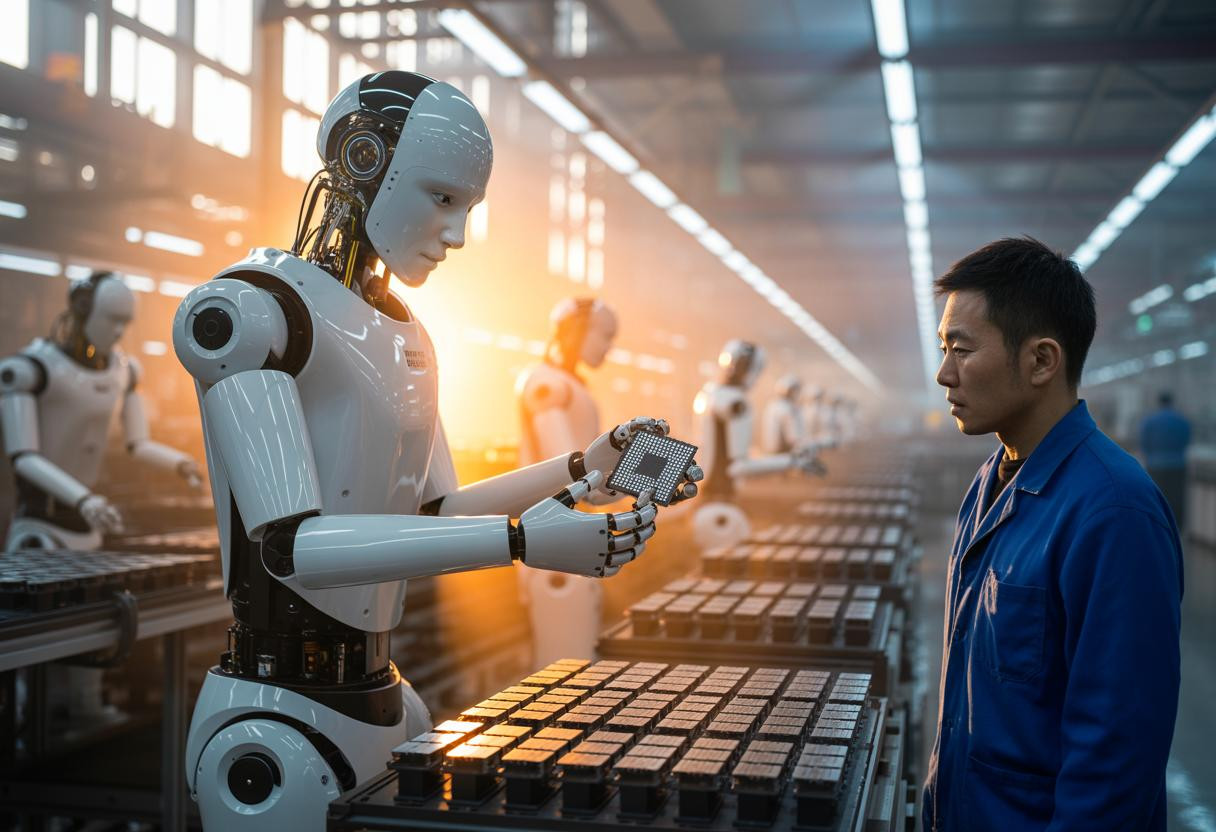China’s humanoid robot revolution is unfolding at breakneck speed, raising serious concerns about mass unemployment as these sophisticated machines begin replacing human workers across multiple industries. With over 1,000 units set to roll out from production lines this month alone, the economic transformation is already sending shockwaves through China’s labor market. What began as experimental technology just years ago has evolved into a government-backed initiative that threatens millions of jobs.
China’s $20 billion bet on humanoid workers
The Chinese government has invested an unprecedented $20 billion in humanoid robotics over the past year alone, dwarfing similar initiatives worldwide. This massive financial backing has accelerated development timelines dramatically, allowing Chinese firms to leapfrog international competitors in bringing affordable humanoid workers to market.
“We’ve reached a tipping point where the technology and cost curves have intersected,” explains Dr. Li Wei, robotics analyst at Beijing Technological Institute. “A humanoid robot that cost $100,000 last year now sells for under $35,000, with prices expected to halve again by 2026.”
Manufacturing jobs first on the chopping block
China’s 123 million manufacturing workers face the most immediate threat. Industry forecasts suggest up to 70% of these positions could be replaced within the next decade, starting with repetitive assembly tasks. Unlike previous automation waves that affected limited sectors, these versatile humanoids can perform complex movements requiring dexterity once exclusive to human workers.
“This isn’t like the industrial robots of yesterday that performed single tasks in cages. These machines can work alongside humans, learn new skills, and increasingly make judgment calls on quality control,” notes Zhang Min, former factory supervisor now retraining as a robot maintenance technician.
The unexpected winners in the robot economy
While traditional jobs disappear, new opportunities are emerging. Key growth areas include:
- Robot maintenance and programming specialists
- Human-robot integration consultants
- AI ethics and safety inspectors
- Robot training specialists
Beyond factories: robots entering healthcare and homes
The healthcare sector is rapidly adopting humanoid assistants, building on China’s groundbreaking AI hospital systems. Elder care facilities are deploying robots to address critical staffing shortages amid China’s aging demographic crisis.
These developments mirror fiction becoming reality, reminiscent of characters in popular sci-fi like Murderbot, though thankfully without the murderous tendencies.
Government response: robot taxes and universal retraining
Facing potential social unrest, Chinese authorities have proposed revolutionary policies including:
- A “robot tax” on companies replacing humans with machines
- Universal retraining programs for displaced workers
- Special economic zones where human labor remains protected
Global implications of China’s robot revolution
International markets are watching anxiously as China’s robot workforce threatens to undercut global manufacturing costs. Unlike international competitors using technologies like Meta’s AI glasses or Samsung’s advanced systems, China’s approach focuses on complete human replacement.
The situation has even drawn comparisons to the mass exodus from popular platforms – but instead of users leaving voluntarily, workers face involuntary displacement.
Will humans find their place in a robot-dominated future?
As these humanoid workers reshape China’s economy like an invisible tsunami, the question remains whether society can adapt quickly enough. The robot revolution once promised to free humans from drudgery, but for millions of Chinese workers, it now looms as an existential threat to their livelihoods. Will we witness a harmonious human-robot future, or are we approaching a tipping point in economic inequality? For China’s workforce, that answer may come sooner than anyone expected.
